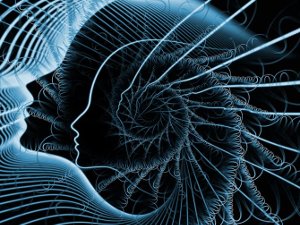Love has captivated human beings for thousands of years. It is an almost universal experience, yet one that is utterly impossible to explain in a universal way. Arguably one of the greatest writers in the history of humankind, William Shakespeare, wrote countless plays and sonnets dedicated to the subject of love. Often, he would couple it with its seemingly opposite theme: murder.
Now, new research suggests that Shakespeare may not have been all that far off.
Love and Sex
Love, it would seem, actually has its roots a lot further back than even the dawn of humanity. Sex is at the very root of why love occurs, and it is what has driven life on this planet since the very beginning. As such, this is where the search for the cause of love as we know it, begins.

To comprehend (or arguably create) the concept of love, the brain had to develop to a large enough size. As brains got larger and larger over the course of millions of years, apes evolved into modern humans. However, this brought with it a new issue.
These beings were having to be born earlier and earlier in development, because larger brains meant larger heads and they otherwise would grow too large to pass through the birth canal.
With earlier births came a much greater responsibility on the part of the mother to look after her offspring. They were helpless to survive alone.
Love and Murder
This need for extra care paradoxically put these children in greater danger. Mothers would not be available to mate with any new males, with all their time taken up by the need to look after her child. As such, the males of the species would often take matters into their own hands, killing the child of the object of their desires. This would give them access to the female, and allow them to pass their genetic code to the next generation.
Kit Opie and a team of researchers from British institution, University College London, proposed a remarkable theory off the back of this. Simply, we fall in love to prevent infanticide.
One-third of primates form monogamous relationships, and it would appear that they do this to prevent offspring from being murdered by competing males. The team of researchers traced back the ancestry of primates to see how parenting and mating habits had changed over millions of years.
They concluded that infanticide was the primary driving force behind falling in love.
Extra Hands
The researchers also noted that with the extra help around the home, so to speak, offspring raised by two parents instead of just one had a much higher chance of survival. Evolutionarily it was a huge advantage to be parented by two beings rather than just one. Another reason for parents to couple monogamously.
This, according to Robin Dunbar from the University of Oxford, UK, would “keep the pair-bond together for life.” Resulting in changes in the brain including particular preferences one would look for in a partner, as well as antagonism towards rivals. If it is a pairing for life, finding the right partner becomes all the more necessary.
Opie explains that this extra help from the males also led to growth and development in early human societies. In turn allowing “our brains to grow larger than our closest relatives.” From an evolutionary standpoint, falling in love was hugely advantageous.
Changes in the Brain

Stephanie Cacioppo, a researcher from the University of Chicago, found, through mining data on brain scans spanning many years, that the most intense states of love rely on an area in the brain found only in humans and great apes. This area is called the angular gyrus and is also responsible for understanding metaphors, and other abstract concepts in language.
The angular gyrus allows us to make some sense of the intense characteristics of our emotions. This lends support to the notion that our ever-growing brains helped love to thrive.
Opie also suggests that romantic love could have “hijacked” the areas of the brain responsible for producing the strong mother-child bond. Chemicals in the brain such as serotonin are higher when we feel love, whether it’s for a child or a partner, so this theory is certainly conceivable. Once a baby is part of the picture for a couple in love, even though the levels of serotonin decrease, other chemicals such as oxytocin are present, keeping the pair bonded.
Cacioppo explains, “The oldest parts of the brain are involved in attachment… and these areas are activated in many species.”
Other Solutions?
Not all species have evolved in this way, however. Some species found other ways of resolving the issue of infanticide thought to be the trigger for why humans fall in love. Bonobos and chimpanzees, for example, are both highly promiscuous. In these species the males have no idea which children are their own, so killing any infants would be counterproductive.
Otherwise, some scientists have come out in opposition to Opie’s team’s findings. One 2014 study from the University of Cambridge, suggested that monogamy was the result of a “mate guarding strategy.” Essentially, males were only staying with partners to stop other males from mating with her.
Is Love Unsolvable?
It seems as though love remains at least partially a mystery to humans. Perhaps, the ‘how’ and the ‘why’ behind falling in love cannot be solved by science, perhaps we don’t need to find a solution. Maybe reducing the inexplicable tingly and fuzzy feeling of love to mere chemicals in the brain or ‘evolutionary advantages’ dilutes some of the very magic at its core? Perhaps love will always remain a mystery.
This article was written by The Hearty Soul. The Hearty Soul is a rapidly growing community dedicated to helping you discover your most healthy, balanced, and natural life.













